MEMORY & STORAGE
| PART 1 - UPGRADING YOUR OLD PC PART 2 - MEMORY AND STORAGE PART 3 - PROCESSOR AND INTERNET PART 4 - PERIPHERALS PART 5 - LICENSING & STARTING PART 6 - INSTALLING WINDOWS 10 PART 7 - CLEANING UP |
You've pulled out the old computer and powered it up. It's booting into an older operating system, and that system is 64-bit capable. What's next?
When you have it on, look it over to see if there's any data on it that you'd like to keep then copy that data off, maybe to a thumb drive, maybe to network storage. Assume that you are going to wipe the hard drive.
| DISCLAIMER: IF YOU OPEN UP YOUR COMPUTER YOU NEED TO USE COMMON SENSE AS THERE ARE ELECTRICAL COMPONENTS INSIDE. DON'T OPEN THE COMPUTER IF IT'S PLUGGED IN. BE CAREFUL WHEN WORKING INSIDE IT. THE COMPUTER IS POWERED BY LOW VOLTAGE BUT THE POWER SUPPLY CONTAINS LETHAL VOLTAGE AND SHOULD NEVER BE TAMPERED WITH. I AM NOT RESPONSIBLE FOR YOUR ACTIONS OR YOUR FAILURE TO TAKE PRECAUTIONS. ADDITIONALLY I AM NOT RESPONSIBLE IF YOU MESS UP YOUR COMPUTER OR LOSE DATA. BACK UP ANY DATA ON THE COMPUTER BEFORE ATTEMPTING ANY UPGRADES IF YOU NEED THE DATA. FYI IN MORE THAN 30 YEARS OR WORKING WITH COMPUTERS I'VE NEVER HAD ANY PROBLEMS WITH ELECTRICITY INSIDE THEM, BUT I NEVER WORK INSIDE A PLUGGED-IN COMPUTER. UNPLUG AND BE SAFE! |
What kind of physical shape is it in? Does it needs cleaning up? Virtually all PC's have a fairly easy way to get inside; on tower models usually one side slides off after unscrewing one or two screws on the back. On horizontal desktop models a couple of screws on the back usually allows the entire case exterior to be slid off. Do so and look inside. I bet the first thing you'll see will be loads of  dust. PCs have fans inside to facilitate cooling the electronics. A lot of air circulates through the computer and a lot of air drops a lot of dust. Years-worth perhaps. The picture on the right is pretty common in older computers. Clean that dust out. Take the computer outside with an old clean paint brush and brush the dust off. You might have one of those cans of compressed air to clean electronics, use it. Pay special attention to the fan on top of the heat sink on the motherboard. Get it as dust-free as you can. It'll run quieter and cooler.
dust. PCs have fans inside to facilitate cooling the electronics. A lot of air circulates through the computer and a lot of air drops a lot of dust. Years-worth perhaps. The picture on the right is pretty common in older computers. Clean that dust out. Take the computer outside with an old clean paint brush and brush the dust off. You might have one of those cans of compressed air to clean electronics, use it. Pay special attention to the fan on top of the heat sink on the motherboard. Get it as dust-free as you can. It'll run quieter and cooler.
MEMORY: When you have the computer booted into the operating system, you should check how much RAM (memory) and storage (hard drive space) it has. Here's an article about the specifics of checking how much RAM you have. If you have 4 GB's of RAM, that's not enough. You'll want 8 minimally, 16 or more would be better. The upper limit will depend on the number of RAM slots in your computer and the highest density of memory chips it's designed to take. You need to do some homework and Google the specifications for your exact computer model (like "Dell Inspiron 1530"). You should be able to find how many memory slots your PC has and how big (capacity) a chip you can put in. You'll also need to know exactly what type of RAM chip it takes, they vary. The specs will tell you that. In a later section, I'm upgrading an ancient HP Pavilion A1210n. When I googled its specifications, I found out this about the memory it takes:
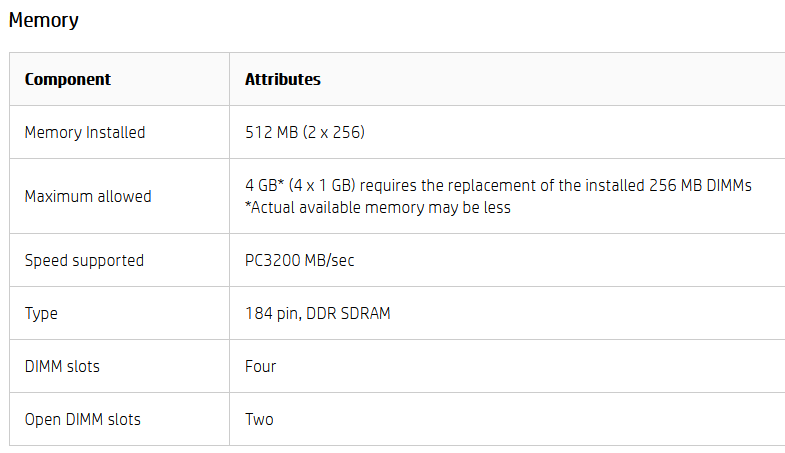
This is all you'll need to know. Now find out the memory specs of your computer and save the info.
This is a RAM chip (or "stick" of RAM).

It's memory capacity is whatever the manufacturer built into it. Here's a list of common RAM chip capacities (from eBay):

Here's a list of different types of RAM chips commonly used:

Don't worry about what they stand for, just be sure to know which type your computer takes.
Sometimes specs for the memory of your computer lists the "BUS SPEED" of RAM. Here's a list of common bus speeds of RAM from eBay:

Once you know what type of memory your computer takes, it's easy to order more. For example, if you have one 4 GB RAM chip in your computer now, and you find that the computer has RAM 2 slots, takes DDR3 SDRAM rated at DDR3-1333 (PC3-10600), and has a maximum RAM capacity of 16 GB's, then you're good! You know that you'll need 2 8 GB RAM chips to reach maximum capacity of 16 Gb's and they have to be DDR3-1333 (PC3-10600). Check out eBay, Amazon, newegg.com and other sources that you can find by Googling. Here's a listing I just found on eBay for that exact RAM, 16 Gb's worth in 2 8 GB sticks, it's $45.75+ 8.75 shipping.
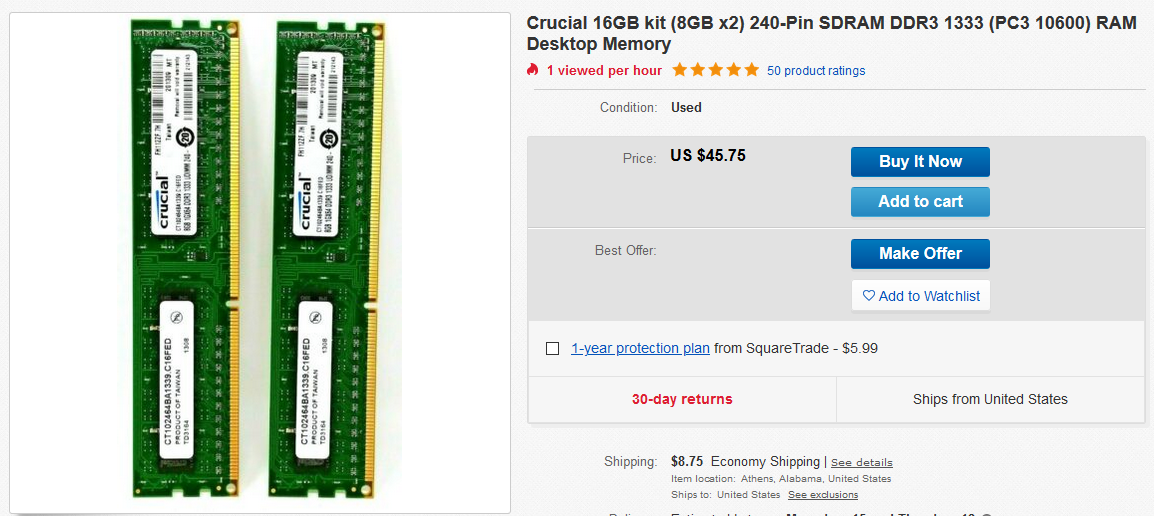
It's used, but used RAM is perfectly OK (as long a there's some provision of returning if there's a problem). FYI If you bought one 8GB stick of RAM you could put that into the empty RAM slot and your computer would have 12 GB's of RAM, which is perfectly acceptable and much cheaper. And yes, if upgrading to 16 GB in this example you'd have to pull the 4GB chip out and not use it. Maybe you could fit it into a different compatible computer?
Upgrade your RAM now!
STORAGE: Storage means your computer's hard drive capacity. I specifically mention a hard drive because an older computer most likely has a hard drive, one of these:

These have a metal platter inside spinning at thousands of RPM. Information is stored on them magnetically.
Newer computers generally have something called a Solid State Drive or SSD; these are banks of memory chips, no moving parts inside.

They're generally smaller than hard drives, about the size of a laptop drive. Sometimes they're just chips themselves that plug into the motherboard, but you're not likely to see one of these on an old computer.
The single greatest increase in computer performance that you can do for an old computer is to swap out the hard drive for a solid state drive. That's because the hard drive needs to physically find the information on the rotating hard drive and read it off; the access speed of the drive is limited by the physically rotating speed of the drive and how fast it can access info. A solid state drive on the other hand has no moving parts, it can access data just as fast as it can electrically. A computer with an SSD boots faster and starts programs faster, noticeably faster than it's hard drive predecessor.
NOTE: we are assuming that the drive inside your computer is something known as SATA drive, that is to say, its connections look like this:
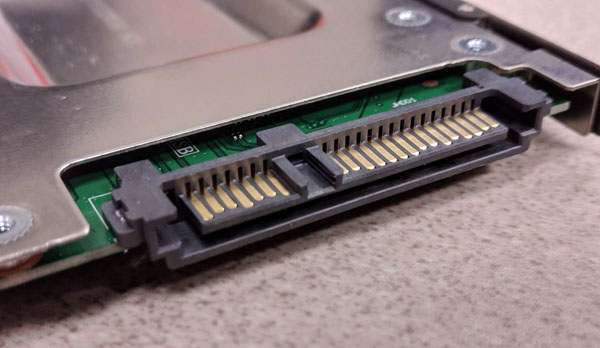
That's a SATA connector, and it uses a data cable like this.
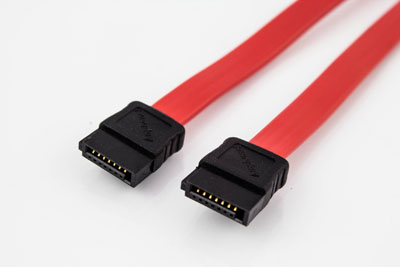
That's a SATA cable. If your hard drive uses a data cable like this, a "ribbon" cable:
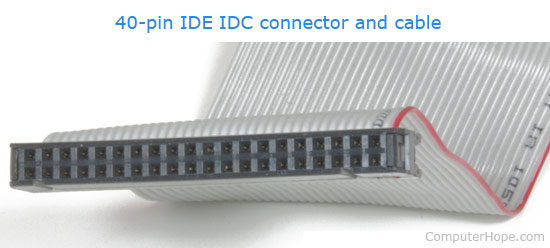
and the drive interface looks like this:
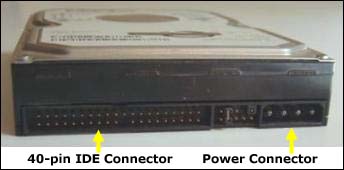
Then you are the unlucky owner of a computer that uses IDE drives and it's bordering on too old to upgrade. You could continue to use the existing hard drive (though you won't see any speed gain and an older drive is more likely to fail). OR you could look for an IDE SSD drive (IDE is what they call the old drive interface); they do make them but they're not cheap. OR if you look on the motherboard itself and can find one or more of these types of sockets:
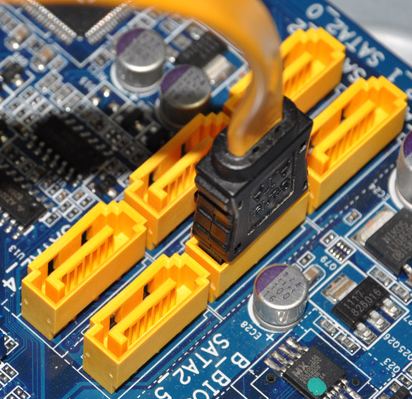
That means that your computer will accept a SATA solid state drive! You're in luck!
If your computer can accept it, I strongly urge you to purchase an SSD, they are not expensive. What size do you need? My experience is that unless you're storing enormous amounts of video or pictures, most people don't even come close to utilizing a fraction of their drive space. Here's what I'd suggest:
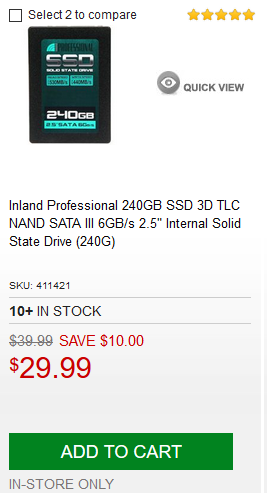
MICRO CENTER, A store on Elston in Chicago, is currently selling an Inland SSD with 240 GB's capacity for $29.99 (left). That's more than enough space for your average every-day computer uses. Get one of these, but don't swap it into place just yet. Or get one on eBay or Amazon that suites your pocketbook and size needs. Computers with 128 GB's or storage are perfectly usable, as are computers with a full TB of storage.
We've spent $84.49 so far (or more like $64.99 if we only bought an additional 8 Gb's of RAM). Not bad! What about the processor and the way the computer connects to the internet?
PART 3 OF UPGRADING YOUR PC - THE PROCESSOR AND THE INTERNET CONNECTION
